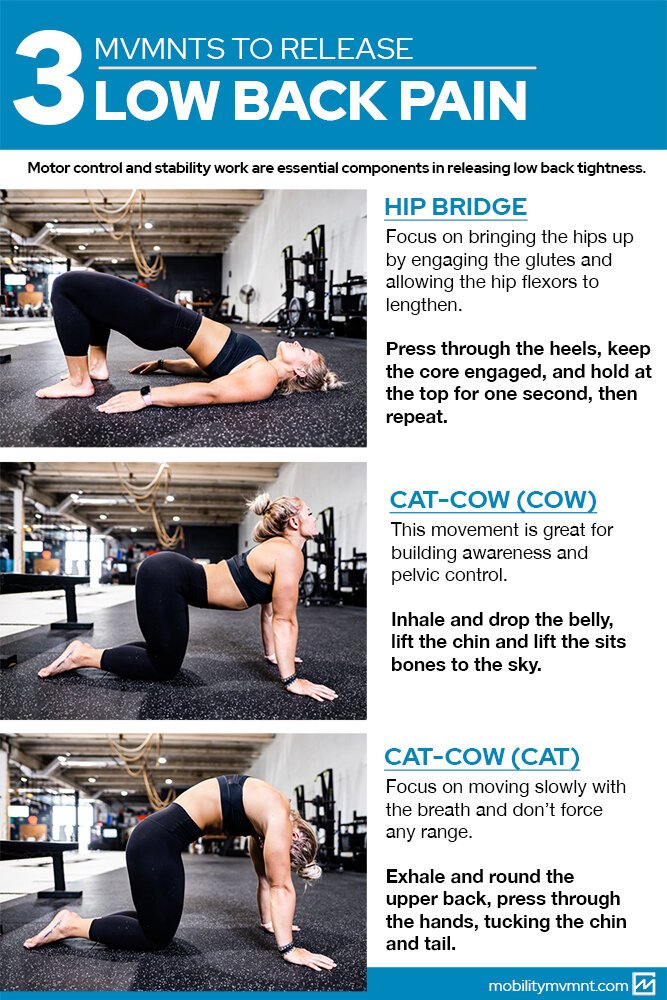Back Pain and Stiffness - Why You May Have It And How To Fix It - Part 1
In this blog post Mobility MVMNT is going to discuss back pain, how it might develop and some strategies on how to reduce or eliminate the discomfort and pain.
In the period between 1990 to 2015, back pain has become the fourth most common injury leading to lost years of a person’s healthy life. It is estimated that approximately 540 million people worldwide have been impacted by back pain in some way, with the highest prevalence occurring in individuals between the ages of 35 and 55 in industrialized nations.
With this in mind, back pain can become a barrier to exercise or training, often without any actual acute injury or trauma to the back. In my 15 years of experience as a strength and conditioning coach, the most common type of pain that I have encountered with clients is back pain that was NOT due to an injury, or the initial injury was years ago and the pain persisted.
The majority of lower back issues I have encountered with clients were the result of poor movement quality and patterns. Poor movement quality leads to a higher risk of injury, or the poor movement patterns can cause compensation patterns to develop which can result in unnecessary wear and tear on the back. Overtime the compensatory patterns can cause irritation of joints and tissue creating an inflammatory response. The inflammatory response can lead to daily or almost daily discomfort. The end result can be a cycle of pain/discomfort and inflammation. Over time if this pattern goes unaddressed, individuals may end up treating the symptoms and not the underlying cause.
The good news is that if the pain is due to poor movement patterns, it can typically be fixed in relatively short period of time when the correct types of mobility, stretching, motor control drills and exercise are introduced. A movement pattern is literally HOW your body moves. Movement patterns are learned through repetitive movement or lack of movement and ingrained as “default” patterns overtime. There are many reasons why individuals suffer from back pain, one reason is living a sedentary lifestyle (lack of movement).
It is incredibly common for you to be seated at work all day and to participate in sedentary activities such as driving, watching TV or playing video games in your leisure time. Spending extended periods of time in a seated position causes your hip flexors to become shortened. The shortening of your hip flexors causes tightness when you stand or extend the hip which can lead to a compromised posture.
Throughout the day your posture may become compromised, you may tend to slouch forward from your upper back, causing you to lose the lumbar curve in your lower back. This combined with a lack of motor control in the spine and pelvic instability, you have a recipe for back pain when you head to the gym after a long day at work.
Before working out try incorporating these movements below into your work day or into your warmup. The goal is to teach the body the correct movement patterning, motor control, and activation for pelvic stability. Regaining pelvic stability, and motor control of the spine and lengthening the hip flexors may be the key to reducing or eliminating the discomfort you feel in your lower back. Many people try to stretch away the pain but often miss motor control and stability work. Make sure when you are working to improve your mobility that you incorporate motor control and stability work. They are essential components of a good mobility program and will help you achieve and maintain the mobility you are working hard for!
Check out the infographic below for three quick motor control and stability exercises to help with your lower back pain!


